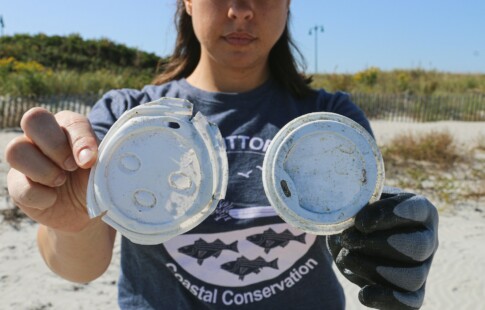
The Orca Language: FAQ on Dialects and Complexity
We are reader-supported. When you buy through links on our site, we may earn affiliate commission.
Orcas, also called killer whales, speak to each other in an almost hypnotic way. Ocean visitors and ocean biologists have been fascinated by the whistles and songs since their discovery. The orca language is unlike any other creature, though other mammalian sea creatures like dolphins also exhibit strange language proficiencies. Let’s dive into the nuances of the orca language — what do humans know and not know about these dangerously cute whales?
Do Orcas Have a Language?
You may have guessed orcas have a curious way of communicating. They use pulsing whistles, clicks, and calls distinct to the family’s culture, also called a pod. Baby orcas in the womb hear the sounds their mother makes, so they are conditioned pre-birth on how to communicate with their pod. The average life span of an orca is around 60 years if it is healthy, and its matrilineal behaviors foster an unimaginable closeness not experienced by many species. Even transient pods develop complex languages no matter how far they travel.
Humans find orcas in all oceans, and because of killer whales’ diverse exposure to unique prey and climates, they shape their dialects and vocalizations accordingly. A pod in the Atlantic Ocean may not even be able to communicate with a pod from the Pacific. Similarly, a pod eating a diet primarily of salmon will talk differently than those eating other sea mammals. It might be as significant as a language barrier or as nuanced as northern and southern accents in the same country.
It isn’t just the sounds they make that insinuate there is social etiquette. They have body language alongside the calls that help humans understand their intentions more tangibly. Non-verbal cues like affectionate nudges and bubbly tail whacks are a few. Some engage in greeting ceremonies. The whales form lines and swim at each other. You can call it a cuddle puddle, or some experts say it resembles a mosh pit — regardless of the aggressive appearance, it is joyous in nature.
The pod’s language allows every orca of all ages to stay connected to the group and hunt successfully. It is all about context.
What Are Advancements in Orca Language Research?
Knowing orcas speak to each other is one hurdle — the next is picking it apart to understand connotation and denotation. How do experts execute research? It may not be complicated, or it is just complex in a way humans cannot understand concerning how we process language.
A 2014 analysis of orcas and dolphins discovered killer whales are capable of vocal learning. This is a technique present in several animals, including humans — it is the ability to imitate new sounds. Adapting like this requires the brain to have high neural plasticity, evident in orcas. Killer whales did this with dolphins, proving they understand distinctions in language and a desire to communicate. The orcas increased the frequency of their clicks and whistles instead of using as many pulsed calls, attempting to connect with their vocal patterns.
An orca named Wikie was observed to be replicating human speech in 2018. The results are debatable, but Wikie’s attempt is apparent.
In-person observational studies are the most common, despite orcas spending most of their lives before the surface. However, advancement in AI and the accessibility of underwater microphones has expanded the possibilities. Researchers leverage deep and machine learning to analyze bioacoustics. Now, hydrophones sink below the surface and record orcas all the time, assisting researchers by filtering out extraneous background noise that would inhibit progress.
How Can We Understand Orcas by Understanding Humans?
Further research draws parallels between the human mind and orcas. You already see how advanced their neural plasticity is, but that isn’t the only similarity the brains have to a human’s structure. They even experience empathy and self-awareness more than other mammals of its type, maximizing the value of their echolocation ability because sound travels faster in water.
Drawing out these similarities might be a more poignant discussion in translating orca language.
Their cingulate sulcus and insula are more developed than other sea-dwellers. It is the most tangible representation of their emotional capabilities, which may influence their language. They also have more gray matter than any animal on the planet. It makes orcas so responsive and spatially aware — their nerve endings are quicker to react and process information because of their enhanced nerve communication.
They also have a more intricate paralimbic system, which is responsible for motivation, control, and parsing of emotional responses in humans. Why are orcas’ paralimbic systems more complex? It leads us to discuss what experts don’t know about the orca language.
What Do We Not Know?
There is enough consistency in the calls that experts can parse some communication. However, it’s unknown whether the orca language has grammar and syntax. They have these metrics to analyze to try and unlock patterns, but much is still left to be discovered:
- Length of the calls
- When they use each sound, such as a call instead of a click
- Vocalization frequency
- Sound repetition
- Distance in which they respond
Some orca populations are on a downward trend, primarily as pollutants wages and food stores for orcas run low. One of the most curious developments researchers might see is a change in pod languages during a time of urgency. The circumstances are not ideal, but the key to saving orca populations might be to discern their cries for help, deepening humanity’s understanding of their emotional and empathetic range.
The Mystery of the Orca Language
Orcas speak to each other, but not with words. Putting it through a translator may not reveal more than their daily hunting plans, or it could show animals more adept at expressing emotion than humans.
Humans must focus on research and environmental activism if they are keen on unraveling orcas’ secrets. The climate crisis will diminish humans’ chance to understand orcas more intimately. Oceans are filled with chemicals and microplastics, to name a few, and taking action and spreading awareness on how it impacts research could be the key to expediting momentum.
Share on
Like what you read? Join other Environment.co readers!
Get the latest updates on our planet by subscribing to the Environment.co newsletter!
About the author
Rachel Lark
Rachel serves as the Assistant Editor of Environment.co. A true foodie and activist at heart, she loves covering topics ranging from veganism to off grid living.





